Artist Interviews 2022
Baroque Anarchist 
By Julia Siedenburg
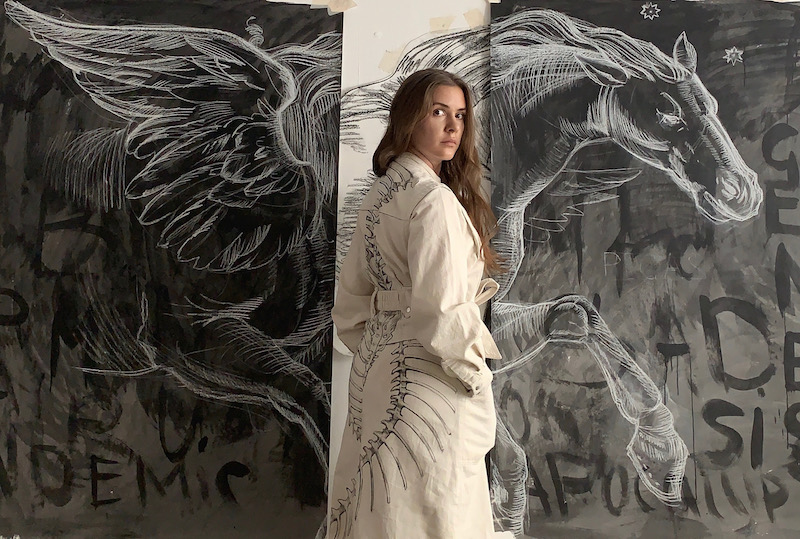
Baroque Anarchist is a true powerhouse of an artist. Her favorite Epoque is part of her artist name. The local Londoner also pays homage to the renaissance and still-life era with an added modern twist. Do her vibrant pieces combine nature and humanity inspired by the idea of Memento Mori (remember you must die)? Some of her artworks include writing in their imagery like the ON AIR and Post-Pandemic Society pieces.
A few other series of hers focus on her ancestries or animals, especially horses for their appearance in the writings about the apocalypse. Her work is full of life (and death) and puts a strong stell on you. You can’t get enough from it.
I loved discovering all of the different creations she has brought to the world and I am very excited to see what she will come up with next.
I am a big fan and I am sure after learning more about her and her work, you will be too, dear reader. So do yourself a favor and read your interview below!!!
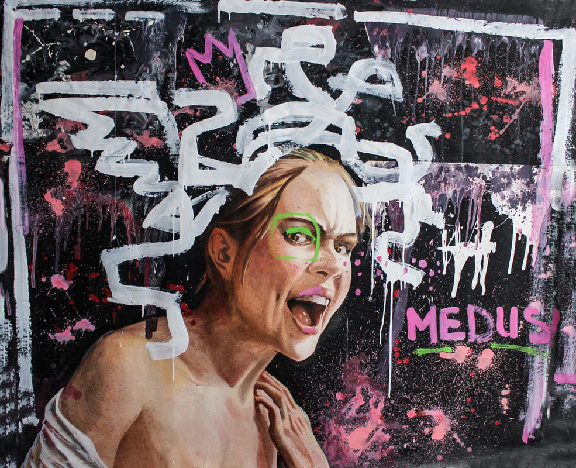
What does being an artist mean to you?
“The painter has the Universe in his mind and hands.”- Leonardo Da Vinci. Being an artist determines my entire lifestyle. Art is a necessary condition for my existence, on the one hand, protection from external conditions, on the other hand, it is the facility with which I explore life. Being an artist also means to me to warrior against death. Art and science are the ways to conquer it. I've always wanted to create something that would live longer than I do. Usually, Paintings or sculptures live longer than their creators.
I love the idea of the artist as an object of art by himself. Being honest and not being afraid to show your weirdness is a part of the practice.
So, being an artist is my refuge from external conditions and the medium through which I explore my emotions.
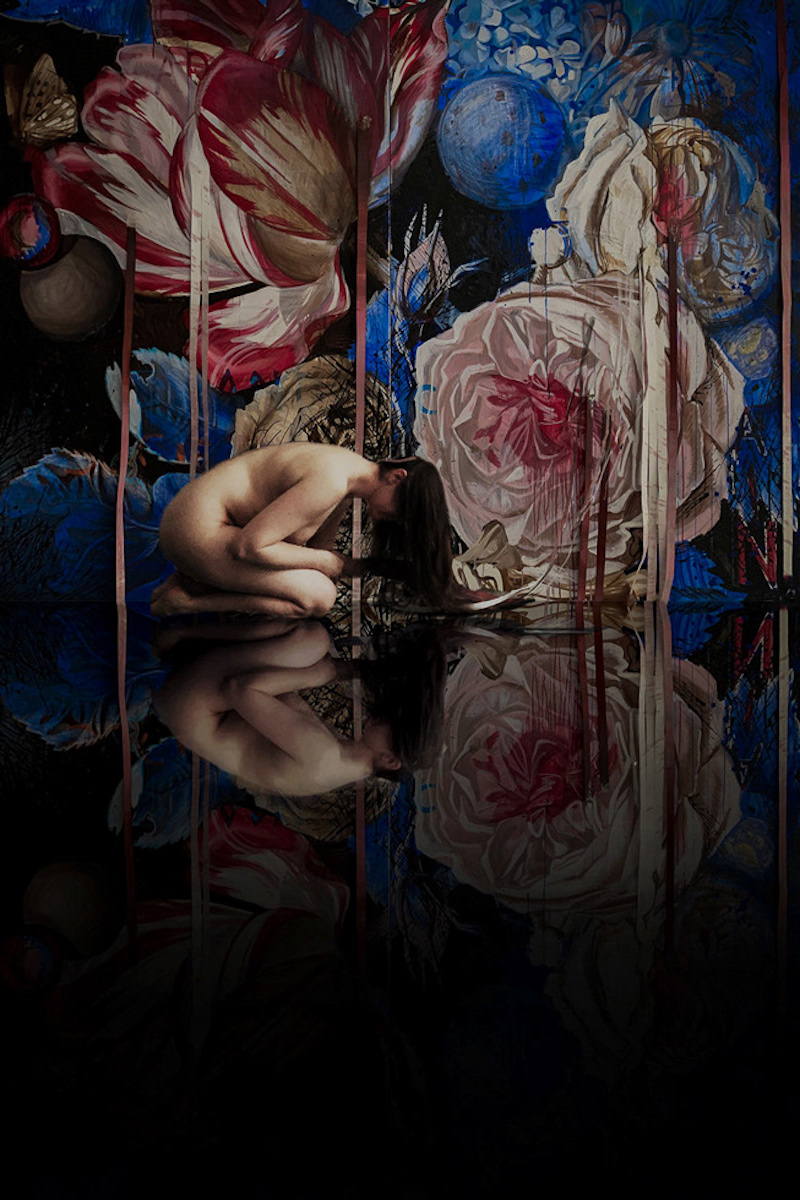
Do you have to be in a certain mood to create art?
I create my best artwork by experiencing strong emotions. Art helps me go through them and it is my way to deal with my emotions. It could be a feeling of anger, being in love, or even physical pain.
Also, for me personally, different stages of creating artwork need to be done in different moods. For example, how it usually works, first when I think about the concept - I should be very emotional, thinking and sketching ( visual thinking ) I usually do them under strong emotions. after then it is the drawing stage I should be calm and focused because it is a rational stage of my artwork. Then painting is again a very emotional stage, and the final is focusing on perfection is again calm and rational. So, it is kind of a game.
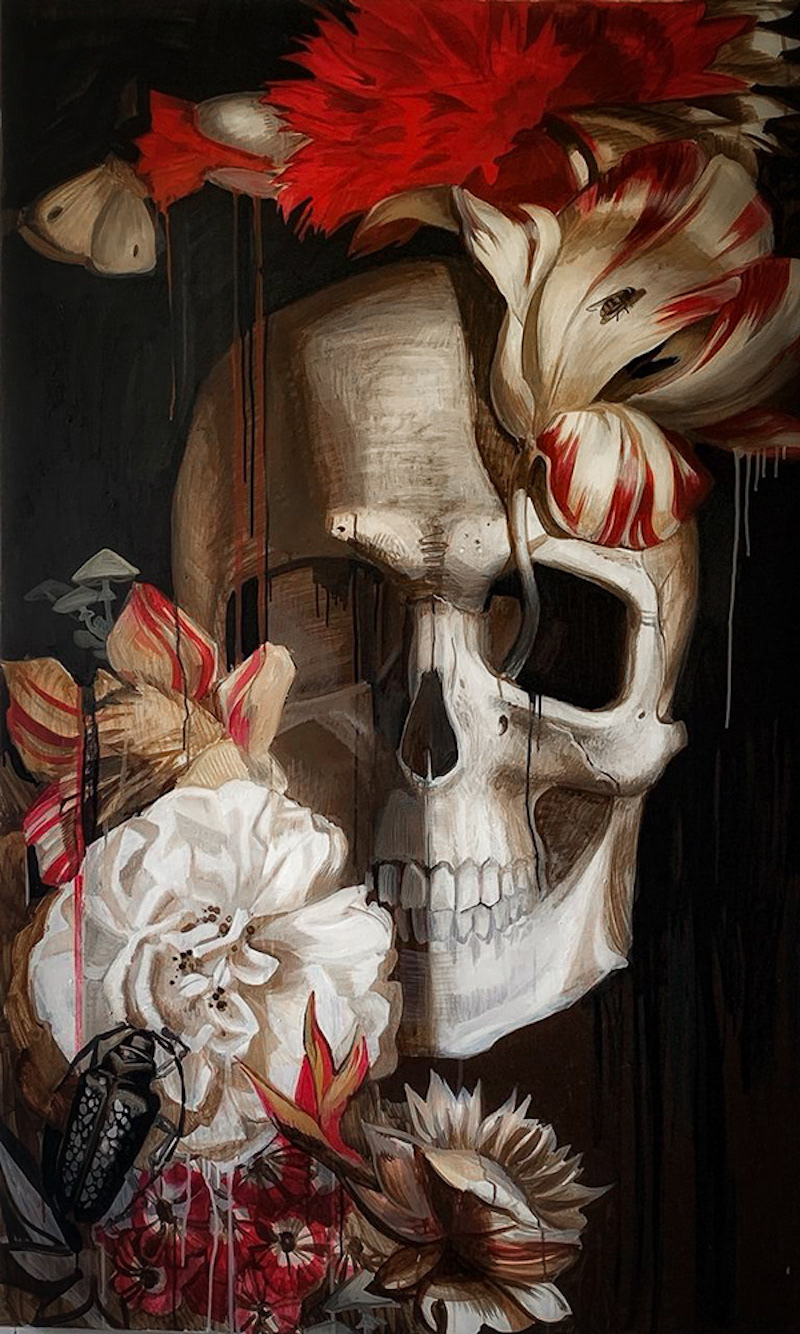
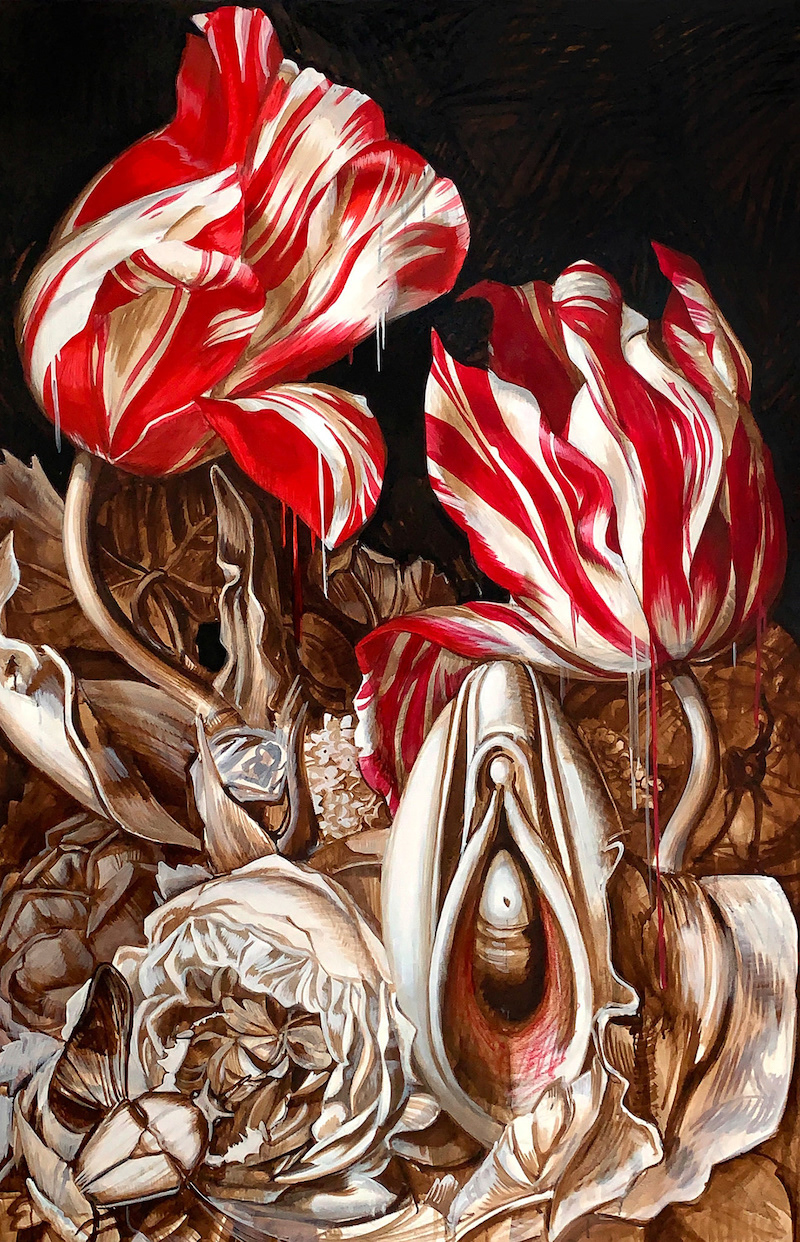
On your Instagram page, you describe your work as “a visual exploration of Memento Mori concept in 21th century”. What inspired you to focus on the inevitability of death?
Art is my fatal game against death to win the time to do meaningful things and be as happy as possible. I love the paradoxical concept of Memento Mori - it is not what it seems at first sight. You look at something scary, however, it reminds a viewer about positive things, doing something meaningful in our lives, and being joyful if possible.
For me personally, it works, I have paintings of sculls and anatomical drawings at my place which send me a message about living my life fulfilled. If it works for me, it is possible it works for someone else.
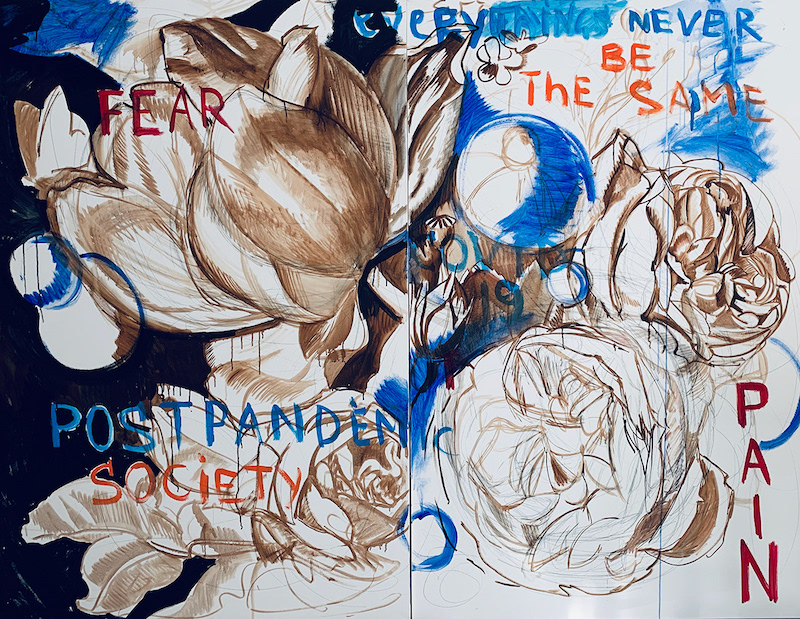
Your work is a mix between exploding colours and rather muted nudes and black and white. Do you decide from the beginning what colours you will use or do you decide spontaneously?
Yes, nearly every artwork I decide from the beginning either it is monocrotic or it is in colours, because my method of creating is quite structured.
In this time of social, political and ecological upheaval, I find comfort in the Baroque masters’
materials and layered techniques of painting, which have endured the test of time. Following their strict method for each work, I make a compositional sketch, followed by a drawing, and then I make a grisaille in a brown-white tone. Only then do I apply a layer of colour, if necessary. It is a slow, labor-intensive method, but it achieves that fleshy materiality of Baroque painting. For me, following these stages is a kind of meditation.
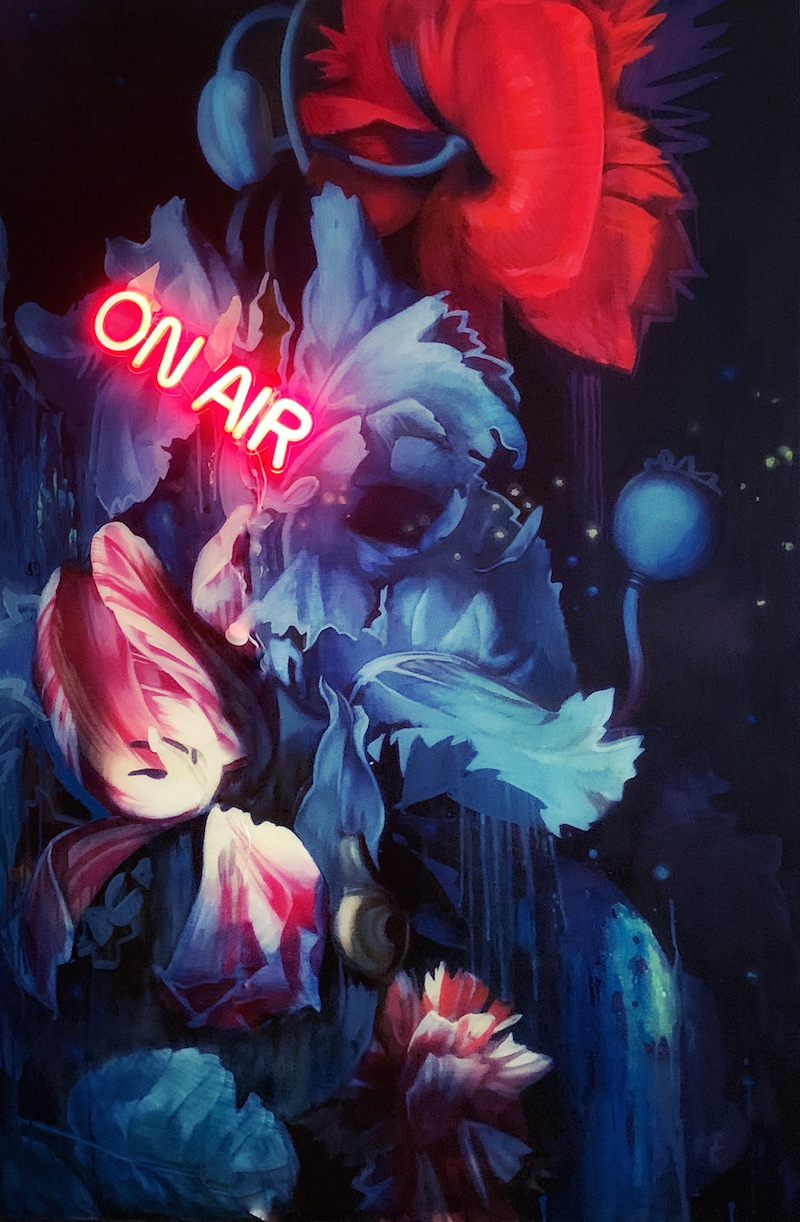
Your still life paintings include classical elements as well as very modern ones for example your “On Air” piece. What inspired you to add that element?
My mission in art is to make painting popular again as it was during Baroque and Rainessance times. I want to theatricalise painting like Alexander McQueen theatricalised fashion at his time. I believe now is the new baroque epoch. Like now, the Baroque epoch was a period of scientific discovery, opulence and excess. Revolutionary research of that time laid foundations for the modern disciplines of anatomy, biology, astrophysics, and information technology. My practice considers current projects to overcome mortality, like organ cloning and space exploration, whilst looking back to see how Baroque artists engaged with the innovations of their day.
It is why I want to add modern pieces of our urban lives to classical elements. It is exactly why I started to do collaborations with street artists. To be understood you have to speak with the audience in a language that people know.
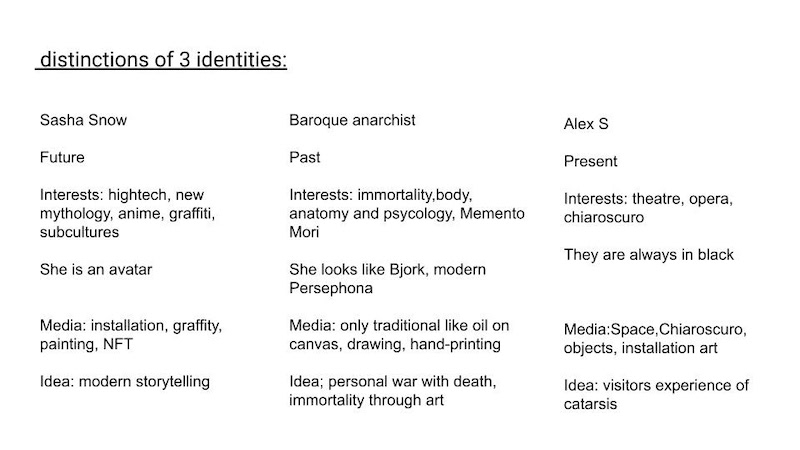
Tell us a bit about your childhood and your upbringing.
I can say I am kind of Sinderella of education.
I am from a simple family in the poorest districts of Moscow. This district was an infamous area for criminal gangs and the wars between them. I even was a witness to cold-blood murder when I was just five years old. I just went from a door when someone was stabbed to death in my eyes on the steps of my house. I believe, this memory influenced all my art practice now, when I am grown up.
To improve the area, A world-famous classical musician Richter built an art school at this area. This school was my first step in art. I loved art and then I enrolled on a very strict art school for teenagers. I can compare it with sports schools, where children don't have any free time, they are always busy. The education was strict however the teachers were incredible and they gave us a wide knowledge in art history, philosophy and painting.
So I have two sides of my personality. the street culture and living in the infamous area of a city on the one hand and the elite education I received on another had. These two parts fight sometimes in me.
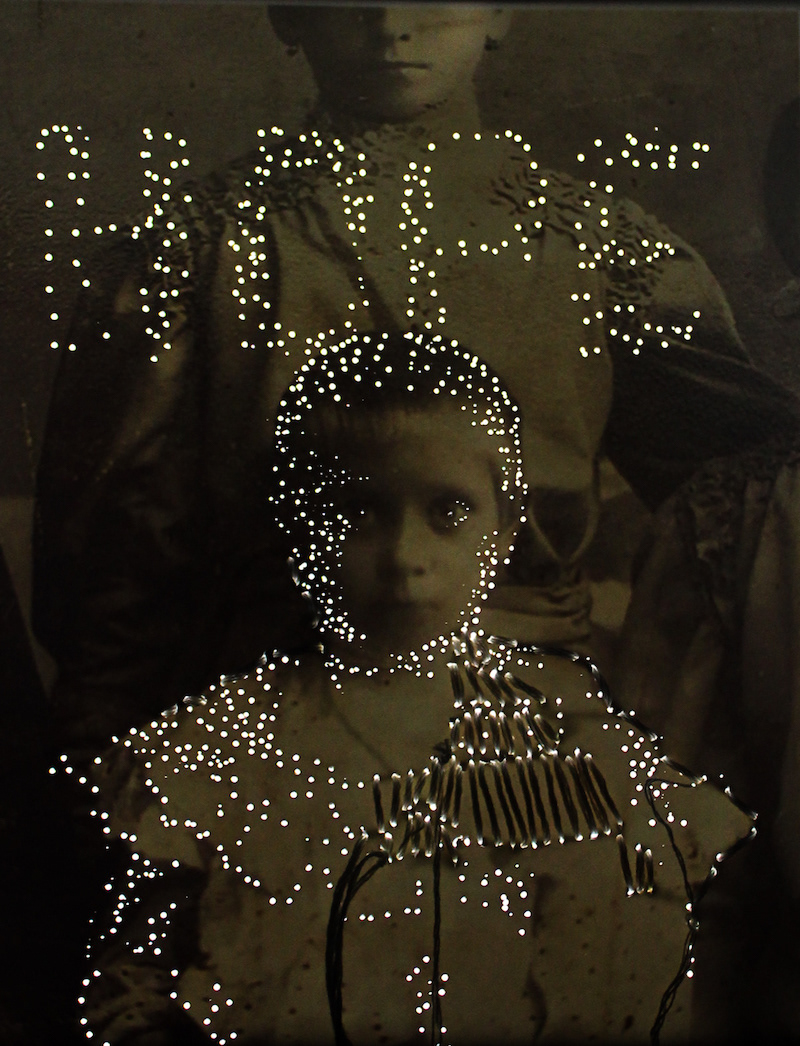
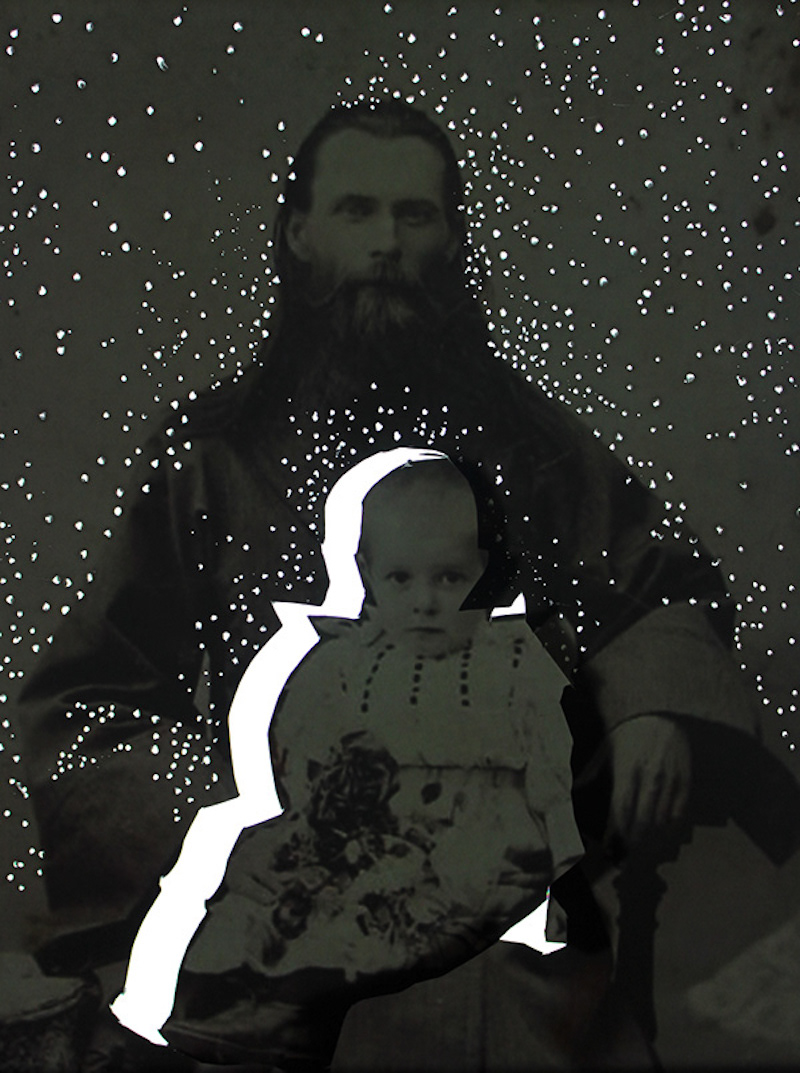
How did you get the idea to create the “In Memoriam” series?
Fairly speaking, not only education and upbringing in a simple family do play role in my personality but also I had a mix in my blood. I have Tatars blood (Tatars are a nomadic ethnic group) from one side, and I am from a family of priests from another side. I was interested as an artist to dig into my roots.
The real story of true sisterhood, love and careness for each other. It is a story about my grand grandmother and her sisters who had incredible destinies. There were five sisters and one of them was adopted into the priest family at the beginning of the 20th century before Russian Revolution. The family lost their mother then my grand grandmother was just 3. The priest had to foster five girls alone. After 7 years he died during Revolution, and the sisters became orphans. They bought a manor and they started to live all together. They become grown-ups and had their own families but still lived all together in this house. They all lost their husbands and partners, one of them was killed in Stalin's time, and one was lost during the second world war. So, at the end, it was the manor where only women and children lived. In spite of the harsh circumstances of living during the revolution, famine, War, and being in poverty after the war they always were together, loved and care about each other. I remember them as very joyful old ladies who plays the piano and joked with each other.
They are real examples of living decent life for me. Brave orphans went through the darkest times and still were open-minded, smily and filled with life.
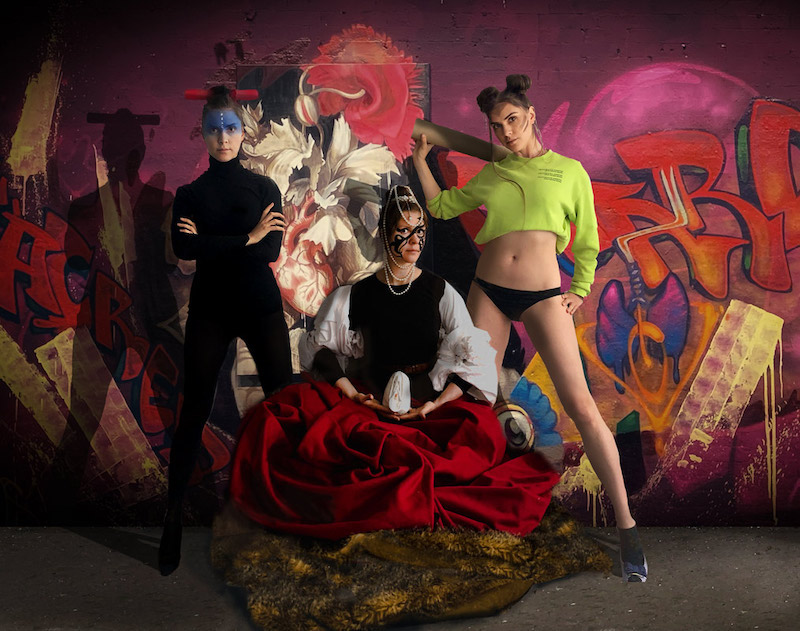
You create beautiful art pieces in the studio and on the streets. Which way do you prefer and why?
It is difficult to choose between studio work and street art. This is exactly why I created three different artistic personalities and switch between them is my method of working. There are three completely different characters every one of which has its own topics and media in art practice in art, every one of them wears their own clothes or has their own make-up.
Sasha Snow- urban artist, Baroque Anarchist- studio artist and Alex S - theatre set designer. Sometimes I like their collaboration with each other. Whenever I am into a new topic I decide which of three artists is going to work with it.
Sasha Snow is an artist who works with Urban mythology. Futurism, utopia and dystopia as well as modern storytelling, exploring urban subcultures and shifting positive and negative stereotypes is the feature of her art practice. She often collaborates with street artists, to explore the aesthetic of urban art and mix it with art history. Also, she is interested in NFT and anime art.
Baroque anarchist is a studio artist and person who has personal counts with Death. she is like a soldier who knows that the battle is lost from the beginning but however still stays on the battlefield till the last breath. So, Baroque anarchist believes that the very weapon they can conquer death is art. Thus, they use materials proven by time like oil and canvas.
Also, the luxury of objects and details are very con objects, details are important like things and objects often live after the death of their owners or creators.
It is impossible for me to choose between them and creating them is my way to continue working with street art and studio.
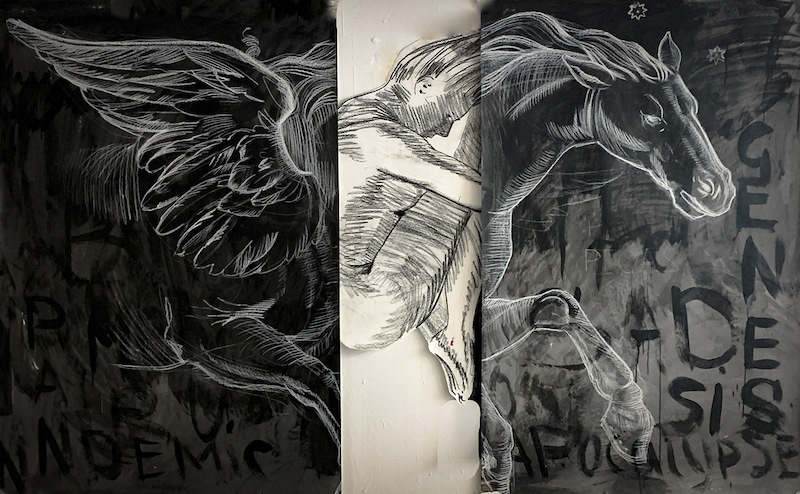
What stands out is that multiple artworks of yours focus on animals, specifically horses. Why is that?
I believe it is because of my Tatar's nomadic blood. Also, I am very interested in the - white, black, red and pale horses of the apocalypse. I don't really know but subconsciously they trigger me.
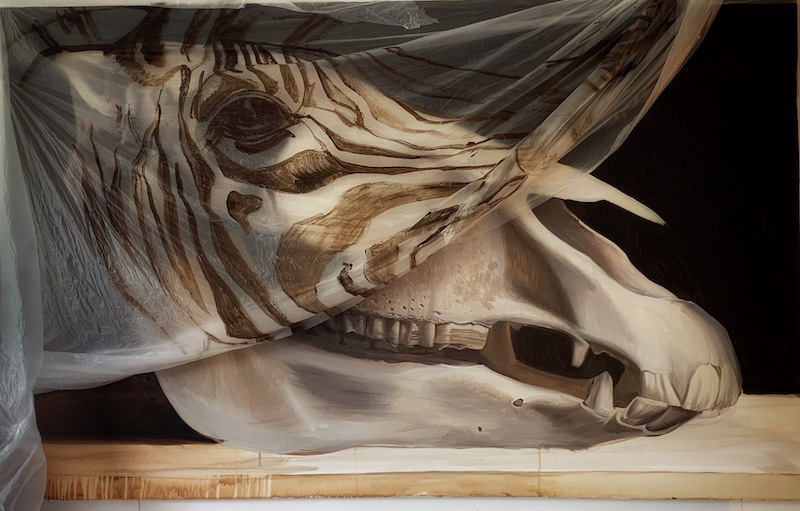
What’s next? What are your plans for the future?
I have a lot of plans for the next year. First I have two solo shows in spring. One is at Secret Art Gallery in London, the second one is at Hyde Gallery in London.
Secret art gallery works with a wonderful bunch of street artists, so my artworks presented there will be connected with urban culture.
Hyde Gallery is going to present artworks by Baroque Anarchists- studio artist. It is going to be my reflections on my favourite topic Memento Mori.
|
|

